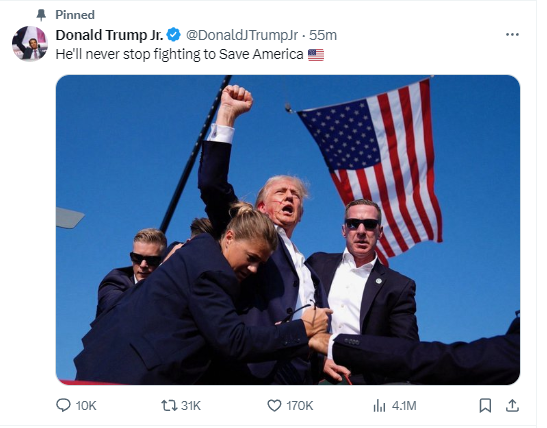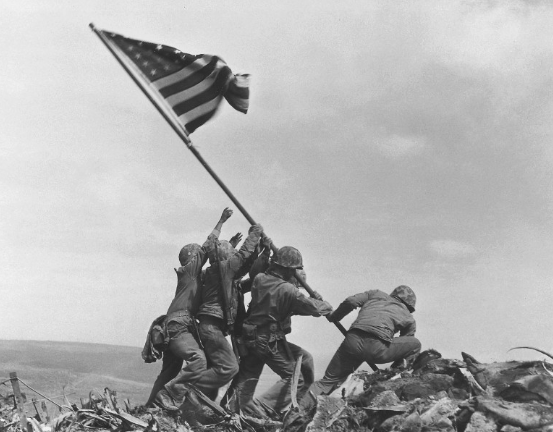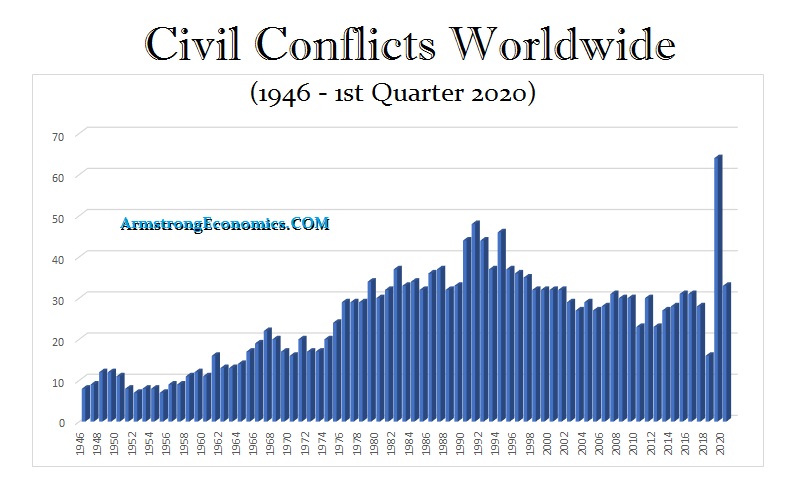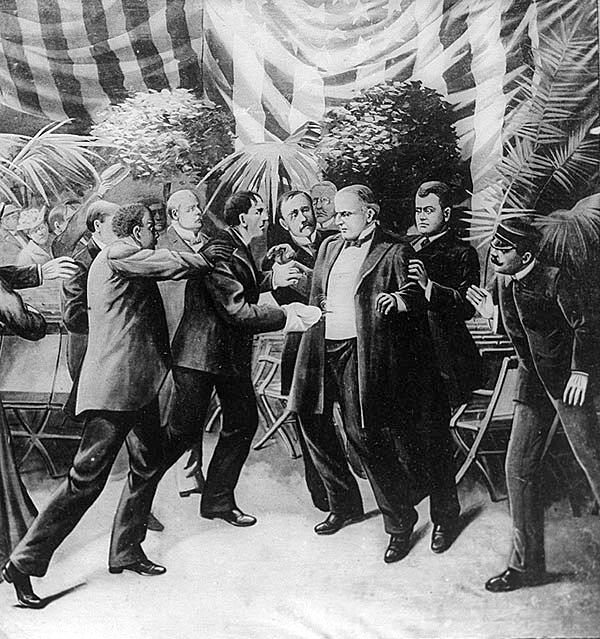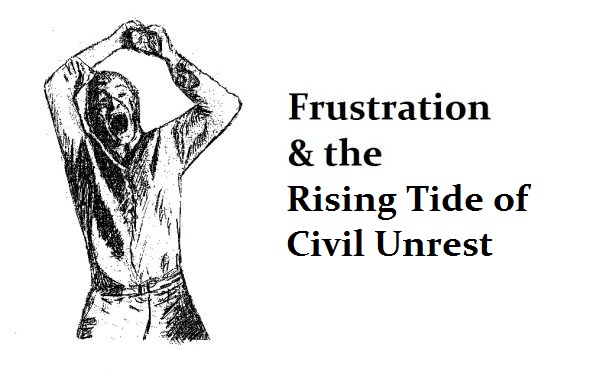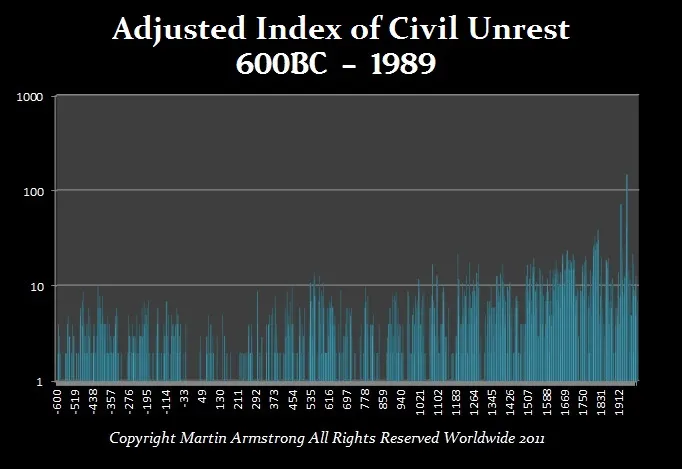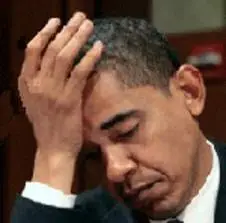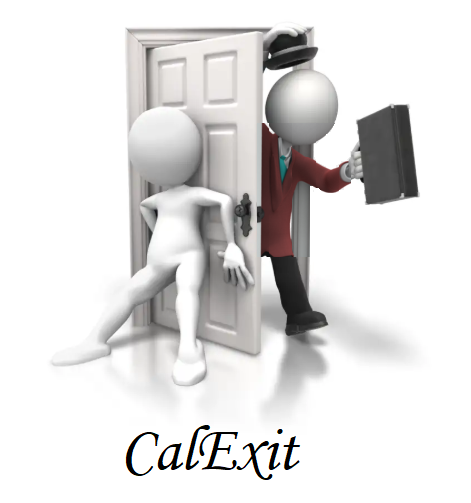This photo will live in American History. The former President flinched onstage when he was shot, grabbed at his face, and dropped to the ground. Moments later, Trump was helped to his feet by Secret Service agents, and he delivered definitive proof that he survived this assassin. He raised his right fist toward the sky and mouthed to the crowd, “Fight.” The Democrats have hated this man because he is not one of them and vowed to drain the swamp. Trump’s lips are pursed, his eyes narrowed, and he is staring at the world, and his chin is slightly raised defiantly. There are streaks of blood pouring from his right ear and streaking across his cheek.
Trump is staring out beyond that moment. He is not looking at just the crowd but the American public and the world. But he also looks far beyond into the future that awaits our nation and the world intent on war. Trump is defiant. He can sense the crisis we face. That man who tried to kill Trump failed, but he did create a moment that will be remembered for eternity. This is rapidly becoming the indelible image of not just Trump’s campaign but also of our politically torn society, which has brought us to the very edge of political crisis and conflict.
This photo taken by Evan Vucci of the Associated Press, with Trump standing against a clear blue sky and four Secret Service agents clutching at him, prepared to take a bullet in defense of liberty, will forever be remembered. An American flag floats over the scene, creating an iconic image that, from history’s perspective, will no doubt emerge akin to hosting the American flag over the battle-scarred Japanese island of Iwo Jima. This photo will symbolize Trump forever.

The very idea of assassinating leaders such as President Lincoln and President McKinley was part of an international trend that began during the 19th century and was based upon the theory that some dramatic deed was necessary to spark a revolution. It was called the “Propaganda of or by the deed,” and it advocated physical violence in a dramatic, provocative public act perpetrated against political enemies to inspire others to act in a popular mass rebellion or revolution. This was a political philosophy that was part of the radical thought process that was emerging with Marxism. Still, it was not precisely advocated by Marx, who was generally a revolutionary.
There have been four Presidents assassinated and three who were wounded, with two misses since 1865.
Abraham Lincoln, April 14th, 1865
James A. Garfield, July 2nd, 1881
William McKinley, September 6th, 1901
Theodore Roosevelt, October 14th, 1912 (wounded)
Franklin D. Roosevelt, February 15, 1933 (5 shots fired missed)
John F. Kennedy, November 22md, 1963
Gerald Ford, September 5th, and 22nd, 1975 (missed)
Ronald Reagan, March 30, 1981 (wounded)
George W. Bush, May 10, 2005 (hand grenade thrown but was dud)
Donald Trump, July 13th, 2024 (wounded)
Our computer has been monitoring civil unrest on a global scale. That number sharply increased in 2017 when Trump took office. Here is a video of the riots that broke out when Trump was inaugurated. They were never prosecuted for interfering in a government session.
This Canacel Culture has undermined the civility of the population. What we must understand is that some assassinations are just by crazy people. However, there are others that have been undertaken as part of a political agenda. This is what our concern must focus on. We are crumbling into utter chaos all because of this Canacel Culture, where the majority demands censorship of anyone they disagree with. That terminates the very foundation of a free society, but worst still, this is the end of civilization. The majority, with their Canacel Culture, are creating tyranny where we are not allowed to disagree. Yet, they claim they are taking this ACTION IN DEFENSE OF DEMOCRACY. There is absolutely no possible way any society can survive with such oppression.
 What we must be concerned about is I am afraid that the hatred and thirst for power are so polarized; I fear that the Deep State will assassinate Trump if he wins because he is against this tyranny that includes war and climate change. Perhaps the first to be associated with this new radical political philosophy of using assassination as a political weapon was born the same year as Karl Marx (1818–1883). He was the Italian revolutionary Carlo Pisacane (1818–1857), who wrote in his “Political Testament” (1857) that “ideas spring from deeds and not the other way around.”
What we must be concerned about is I am afraid that the hatred and thirst for power are so polarized; I fear that the Deep State will assassinate Trump if he wins because he is against this tyranny that includes war and climate change. Perhaps the first to be associated with this new radical political philosophy of using assassination as a political weapon was born the same year as Karl Marx (1818–1883). He was the Italian revolutionary Carlo Pisacane (1818–1857), who wrote in his “Political Testament” (1857) that “ideas spring from deeds and not the other way around.”
Another anarchist of the period who was perhaps the most influential figure of the anarchism movement and one of the principal founders of the “social anarchist” tradition was Mikhail Bakunin (1814–1876). Bakunin gathered tremendous prestige as an activist during this period, making him one of Europe’s most famous ideologues. Bakunin gained substantial influence among radicals throughout Russia and Europe. In one of his surviving letters from 1870 to a Frenchman concerning what he labeled the “Present Crisis,” Bakunin clearly stated that “we must spread our principles, not with words but with deeds, for this is the most popular, the most potent, and the most irresistible form of propaganda.”
Bakunin’s words were popularized by the French socialist-anarchist Paul Brousse (1844–1912), who in 1877 cited as examples the 1871 Paris Commune and a workers’ demonstration in Berne provocatively using the socialist red flag. By the 1880s, the slogan had begun to be used to refer to bombings and tyrannicides. Reflecting this new understanding of the term, the Italian anarchist Errico Malatesta (1853–1932) years later, in 1895, described “propaganda by the deed” as violent communal insurrections designed to ignite an imminent revolution.

The anarchist movement that began in Russia in 1878 was known as Narodnaya Volya (Народная Воля in Russian; People’s Will in English). This revolutionary anarchist group was inspired by Sergei Nechayev (1847–1882) and “propaganda by the deed” theorist Pisacane. The Russian group evolved with ideas that targeted the killing of the “leaders of oppression” as, indeed, the correct path for all political movements where small non-state groups should employ violence. They advocated using modern technologies such as the invention of dynamite. This was the first anarchist group to employ such dynamite on a widespread basis. This was the origin of the Russian Revolution in 1917 and the following bloodbath. They were assassinated on March 13th, 1881, by Russia’s Tsar Alexander II (1818-1881) with a bomb that also killed the Tsar’s attacker. Alexander II was also born in the same year as Marx – 1818. This assassination failed to inspire a revolution, but it took a step in that direction, eventually leading to the Russian Revolution 37 years later (8.6 x 4.3).
Individual Europeans also engaged in politically motivated violence during the 19th century. For example, in 1893, Auguste Vaillant (1861-1894), who was a French anarchist, bombed the French Chamber of Deputies on December 9th that year. The anarchist movement expanded through a contagion process, spreading from nation to nation and even across seas. Between 1894 and 1896, during the economic decline, the President of France Marie Francois Carnot, Prime Minister of Spain Antonio Cánovas del Castillo, and Austria-Hungary Empress Elisabeth of Bavaria were killed by anarchists. This was the backdrop to the assassination of President William McKinley in 1901 and why his wife feared for his life.
William McKinley, who was the 25th President of the United States, was assassinated on September 6th, 1901, inside the Temple of Music on the grounds of the Pan-American Exposition in Buffalo, New York. He was shaking hands with the public when Leon Czolgosz, an anarchist, shot him twice in the abdomen. McKinley died six days later. Leon Czolgosz worked in a Cleveland factory until he lost his job in a labor dispute in 1893. After that, he appears to have been inspired by the economic turmoil of the Panic of 1893 to embrace this political theory of anarchism. This philosophy was becoming widespread and discussed even on college campuses. By 1901, New York’s Supreme Court ruled that the act of identifying oneself as an anarchist in public was a breach of the peace.
On June 28th, 1914, a teenage Serbian nationalist gunned down Archduke Franz Ferdinand and his wife, Sophie, as their motorcade maneuvered through the streets of Sarajevo. Bosnia-Herzegovina had just been annexed by Austria-Hungary a few years earlier against the wishes of neighboring Serbia. This was the hotbed of political discontent. This event unleashed World War I about one month following the assassination.
This division between left and right within the United States and the West has been building since 2007. This movement will become increasingly violent since our models entered the uptrend in 2014. More and more people in many countries are becoming frustrated, especially following the COVID lockdowns. We should expect rising frustration with this 2024 election. At the same time, there is generally a 19-year cycle in political assassinations that does not rule out more than one during the cyclical window of time.

